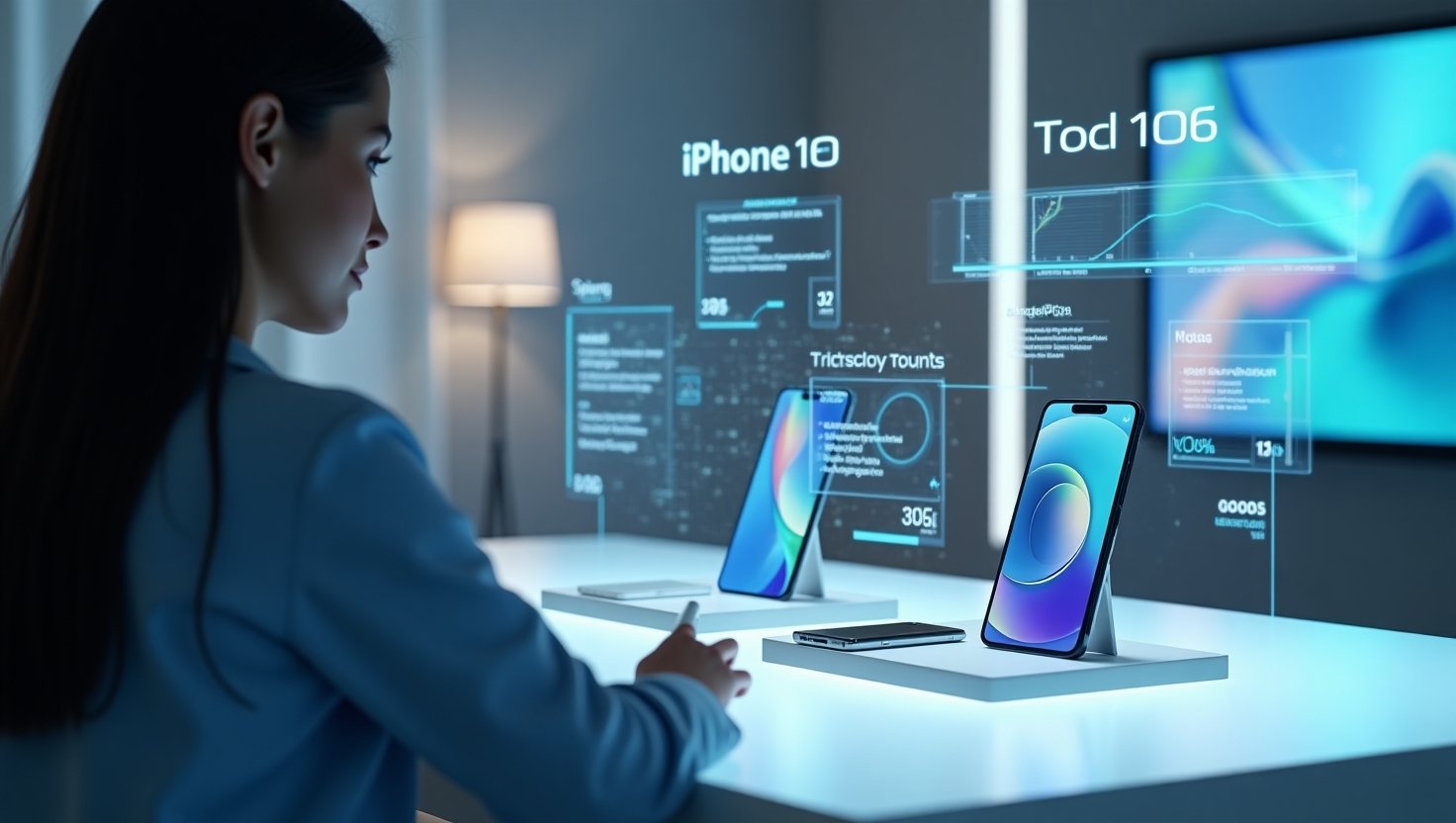Need help choosing a smartphone in 2025? This ultimate guide covers AI features, cameras, battery life, iOS vs Android, and the best phone deals.
The Moment That Changed Everything
It was a rainy Tuesday morning in March when Carla’s phone slipped from her hand, hit the pavement, and shattered. Not just the screen—her connection to work, her photos, her wallet, and even her smart home all cracked in an instant. She’d had that phone for four years. It had seen her through a promotion, two breakups, and the birth of her nephew.
Now, standing in the store with rows of glossy devices staring back at her, she felt completely overwhelmed.
“How do you even choose a smartphone in 2025? They all look the same!”
If you’ve ever felt like Carla—lost in a sea of specs, prices, and flashy features—you’re not alone. Choosing the best smartphone in 2025 isn’t just about picking the shiniest screen. It’s about matching a device to your lifestyle, budget, and future needs.
This ultimate guide will break it down for you step-by-step, helping you make a smart, informed decision with confidence.
Why Your Next Smartphone Decision Matters More Than Ever
A smartphone today isn’t just a phone. It’s your bank, your camera, your notebook, your remote control, and often, your primary computer.
With rising costs and rapid tech changes, getting the best value smartphone or high-performance mobile device is more important than ever.
Let’s explore how to do it right.
Step 1: Identify Your Smartphone Needs
Before diving into specs, ask yourself:
- What do I use my phone for most? (Work, gaming, content creation, social media, photography?)
- How long do I plan to keep it?
- What’s my budget?
Quick Personas:
- The Power User – Needs flagship performance and multitasking muscle
- The Content Creator – Prioritizes camera, video editing, and social tools
- The Practical Buyer – Wants solid performance on a reasonable budget
- The Tech Enthusiast – Wants cutting-edge features, AI tools, and future-proofing
Tip: Matching your persona helps narrow down choices early.
Step 2: Set Your Budget (But Think Long-Term)
High-End ($1,000+):
- Flagships like iPhone 16 Pro, Galaxy S25 Ultra, Google Pixel 9 Pro
- Cutting-edge AI, camera systems, and future-proof support
Mid-Range ($500–$999):
- Great value phones like Galaxy A-series, Pixel A-series, OnePlus
- Excellent performance, good battery, great cameras
Budget Phones (<$500):
- Best for light users, kids, or secondary devices
- Trade-offs in camera and display quality
Pro Tip: Check for trade-in programs and carrier deals—they can make flagship phones surprisingly affordable.
Step 3: Choose the Right Operating System
iOS (Apple)
- Seamless ecosystem (iPhone, iPad, Mac, Apple Watch)
- Regular updates (5–6 years)
- Great resale value
- Fewer customization options
Android (Samsung, Google, OnePlus, etc.)
- Flexible and customizable
- More variety across brands and price points
- Deeper Google service integration
- Update longevity depends on brand
Tip: Already using Apple or Google services? Stick with that ecosystem for smoother integration.
Step 4: Focus on Features That Actually Matter in 2025
With so many buzzwords floating around—AI-driven performance, multi-camera systems, satellite connectivity—it’s easy to get distracted. Here’s what truly counts:
1. Display Quality
- Look for: OLED or AMOLED, 120Hz+ refresh rate, high brightness (1000+ nits)
- Why it matters: Better visibility outdoors, smoother visuals, and battery efficiency
2. Camera System
- Look for: Multi-lens (wide, ultra-wide, telephoto), advanced night mode, AI stabilization
- Why it matters: Better photos in all conditions, especially low light and zoom
3. Battery Life & Charging
- Look for: 4,500mAh+, fast charging (45W+), wireless and reverse charging
- Why it matters: Less downtime and anxiety
4. Performance & Storage
- Look for: Latest chipsets (A18 Bionic, Snapdragon 8 Gen 4), at least 8GB RAM, 256GB storage
- Why it matters: Smooth multitasking, gaming, and app performance
5. AI Features & Smart Tools
- Examples: On-device AI assistants, photo editing, language translation, real-time summaries
- Why it matters: Makes daily tasks easier and faster
Step 5: Compare the Best Smartphones of 2025
Here are some top picks in each category:
Best Flagship Smartphone 2025:
- iPhone 16 Pro Max – Best for iOS lovers and creators
- Samsung Galaxy S25 Ultra – Best display, camera zoom, AI tools
- Google Pixel 9 Pro – Best AI integration and Android software
Best Value Smartphone:
- Pixel 9a – Clean Android experience, stellar camera
- OnePlus Nord 5 – Speedy performance, sleek design
- Samsung Galaxy A75 – Balanced choice with great display
Best for Battery Life:
- Asus ROG Phone 8
- Moto G Power 2025
Best for Photography:
- iPhone 16 Pro – Cinematic mode, smart HDR
- Galaxy S25 Ultra – Zoom and low-light king
Step 6: Watch Out for Marketing Traps
Don’t get lured by:
- Megapixel myths (more doesn’t always mean better)
- RAM inflation (12GB+ isn’t always needed)
- Unnecessary gimmicks (foldables aren’t for everyone yet)
Focus on real-world use, not just flashy ads.
Step 7: Read Reviews — The Smart Way
- Use trusted sources like GSMArena, The Verge, Android Authority, and TechRadar
- Watch real user reviews on YouTube
- Pay attention to battery tests, camera comparisons, and long-term usage feedback
Tip: Search for “[Phone Name] issues” to spot red flags.
Step 8: Make It Yours — Buy Smart
Before clicking BUY:
- Compare prices across Amazon, Best Buy, carrier sites, and manufacturer stores
- Look for student, trade-in, or bundle discounts
- Don’t forget about refurbished phones with warranty — great value!
Final Thoughts: You’re Smarter Than You Think
Back in that store, Carla didn’t rush. She used the questions above, checked reviews, and compared deals. She ended up with a mid-range phone that fit her perfectly — and saved $400 in the process.
You can do the same. In 2025, the smartest phone choice is the one that fits your life, not just the trend.
